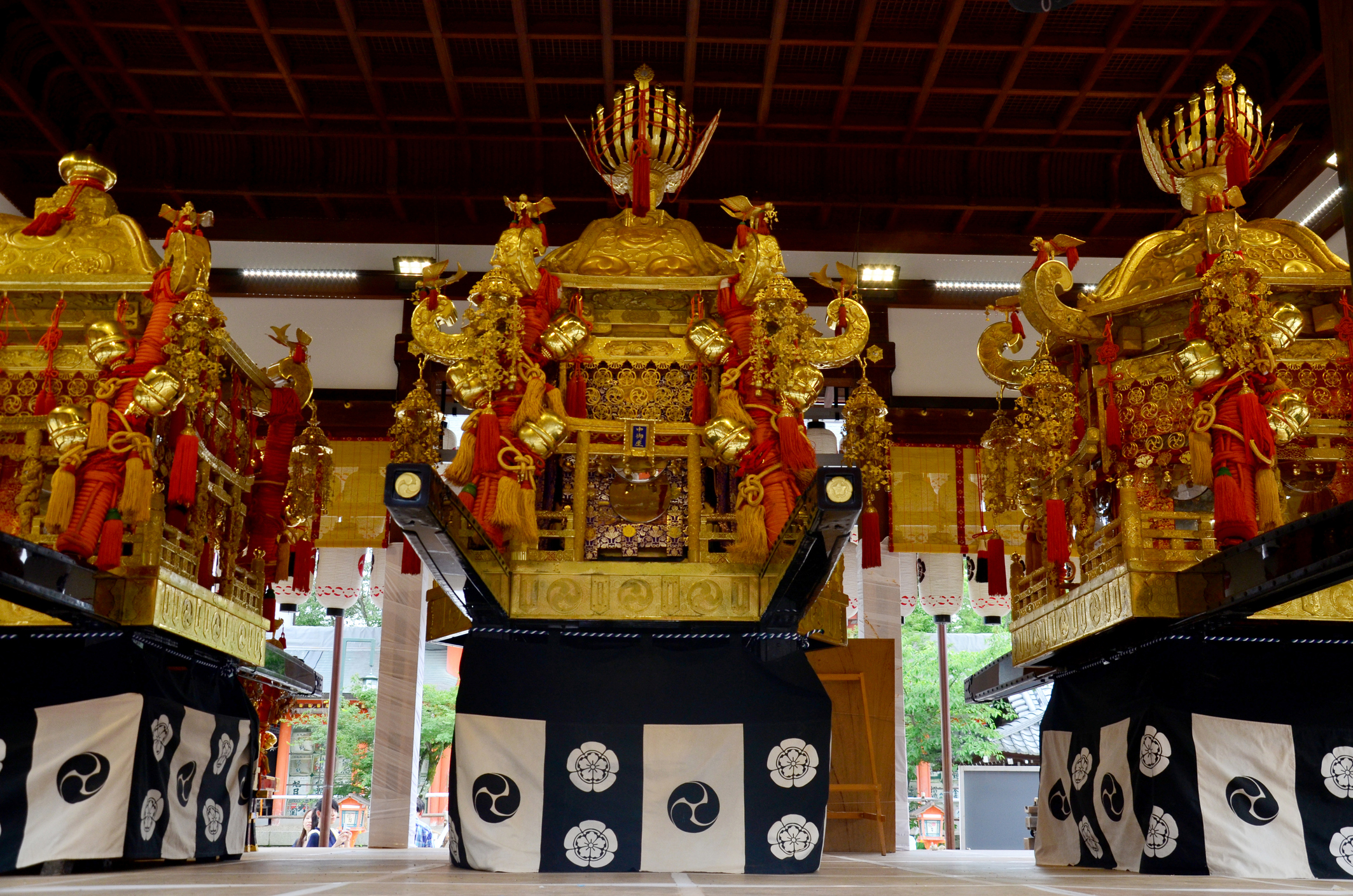
Tuayai.. “The mikoshi (divine palanquin) for show traveler at Yasaka shrine or Gion Shrine in Kyoto, Japan.” Getty Images, IStock Editorial/ Getty Images Plus, retrieved 2 Feb, 2019.
Children carry みこし, a sacred palanquin, during the summer festival. In mid-August, local festivals are held so that families and neighbors can get together.They usually have はなび, fire works, and ぼんおどり, dance.People wear ゆかた, a summer kimono, on the festival day. (Source: TJF)
You must keep in mind that fluency in Japanese (or any foreign language) does not happen over night. It may seem to be a very slow process to you but it is one that is achieved the more you practice and seek ways to use your new skills.
In Places you will:
- talk about your city or town
- talk about stores or places in your town
- describe where things are in relation to other things in your town
- talk about things you do or are doing, like and dislike to do, or want to do
- review katakana
![]() Topics and Study Time
Topics and Study Time
You should keep in mind that during the course of this unit you should spend time doing the following daily:
- At least 15 minutes daily vocabulary activities, drilling vocabulary (flashcards).
- Practicing hiragana.
- Going back to review any vocabulary from previous units as a warm-up activity.
![]() Graded Assignments will have the checkmark icon next to the title.
Graded Assignments will have the checkmark icon next to the title.
To locate the most current assignment instructions and to submit your completed work, please go to your Section Assignments folders in Schoology. You will complete the following types of graded assignments in this unit:
- Grammar Notes
- Oral Assignments
- Writing Assignments
- Discussion Assignments
- Speaking Assignments
- Section Quizzes
- TPR Quizzes
- Unit Exam
